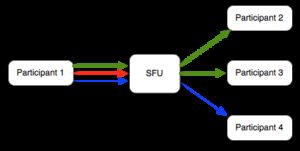Multi-party calling architectures are a common topic here at webrtcHacks, largely because group calling is widely needed but difficult to implement and understand. Most would agree Scalable Video Coding (SVC) is the most advanced, but the most complex multi-party calling architecture. To help explain how it works we have brought in not one, but two WebRTC video architecture experts. […]
Brief
Optimizing video quality using Simulcast (Oscar Divorra)
Dealing with multi-party video infrastructure can be pretty daunting. The good news is the technology, products, and standards to enable economical multiparty video in WebRTC has matured quite a bit in the past few years. One of the key underlying technologies enabling some of this change is called simulcast. Simulcast has been an occasional sub-topic […]
The Big Churn – learning from real usage stats (Lasse Lumiaho and Varun Singh)
Losing customers because of issues with your network service is a bad thing. Sure you can gather data and try to prevent, but isn’t it better to prevent issues in the first place? What are the most common pitfalls to look out for? What’s a good benchmark? What WebRTC-specific user experience elements should you spend […]
OMG WebRTC is tracking me! Or is it?
There has been more noise about WebRTC making it possible to track users. We have covered some of the nefarious uses of WebRTC and look out for it before. After reading a blog post on this topic covering some allegedly new unaddressed issues a week ago I decided to ignore it after some discussion on the mozilla […]
Hello Chrome and Firefox, this is Edge calling
For the first time, Chrome, Firefox and Edge can “talk” to each other via WebRTC and ORTC. Check the demo on Microsoft’s modern.ie testdrive. tl;dr: don’t worry, audio works. codec interop issue… Feature Interoperability Notes ICE yes Edge requires end-of-candidate signaling DTLS yes audio yes using G.722, Opus or G.711 codecs video no standard H.264 […]





